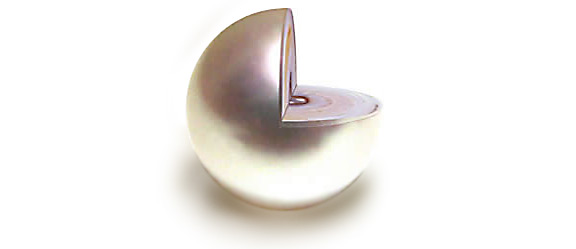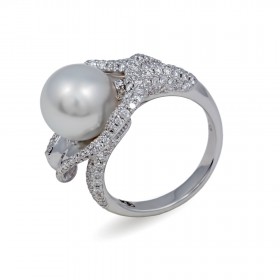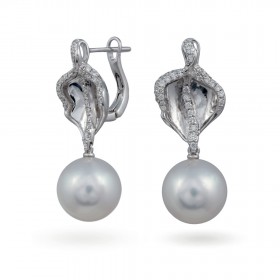Pearls are unique among gemstones, which is the result of vital activity of living organisms - mollusks. In determining the quality and value of pearls include the following six characteristics: thickness of nacre, luster, surface quality, shape, color and size. Unfortunately, there is no single international standard for grading pearls. As a rule, to assess the quality of the sellers use the letter grading system from A to AAA, and the same letters with the sign "+" or "-".
Pearl Size - is determined in mm as the diameter of the pearl. The size of the pearl can be from 1 mm – freshwater pearls, to 20 mm saltwater pearls. The average size of pearls is 6 - 8 mm. Under otherwise equal characteristics, the size of a pearl will determine its price. Large pearls are rarer and therefore more expensive, the increase in diameter of the pearl even 1 mm, can significantly affect its value.

Pearl Nacrel is a natural substance that the mollusk secretes to protect from foreign objects that may get inside the shell. Mother-of-pearl cover and the inner surface of the shell. The thickness of the nacre used as a characteristic for evaluation purposes only saltwater cultured pearls. The thicker the nacre, the more valuable pearls.

Pearl Luster - describes reflectivity of the surface of the pearls. Pearl of good quality is vivid and sharp shine. In such pearl You can see your reflection on the pearl's surface. Pearls with a white (chalk) and a matte surface will be lower quality.

Pearl Surface - cleaner the surface of the pearl, the more valuable it is. Look for an absence of disfiguring spots, bumps or cracks on the surface of a pearl, also known as "cleanliness." Notice that the highest quality pearls have a sharp, mirror-like reflection.
Pearl Shape - pearls are perfectly round are very rare. Pearls are more round in shape more. Baroque pearl that is not symmetrical and round in shape and can be bright and shiny but as a rule, is cheaper than the round pearls.

Pearl Color - natural pearls come in a variety of colors and shades, from white to black. It is important to distinguish color and shades. For example, natural colors of pearls are available: white, pink, green, gold and black. Within each color there are various colors, white pearls may be silver and ivory. The choice of color is a matter of taste, for example, the pearl is warm, pink tones, looks better on white skin, and Golden shades on dark.


Information from the site (translated) http://pearlparadise.com/


